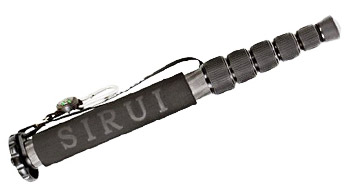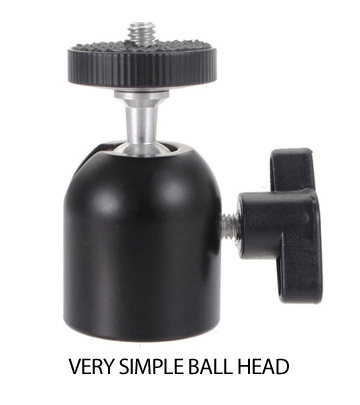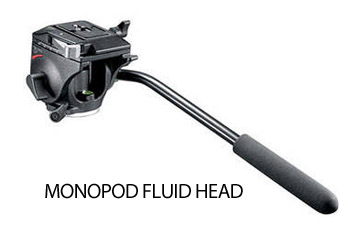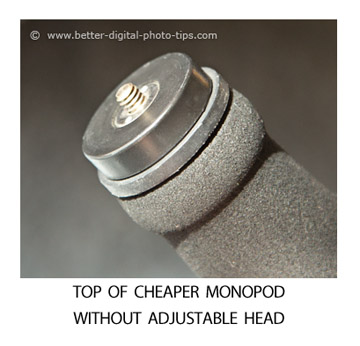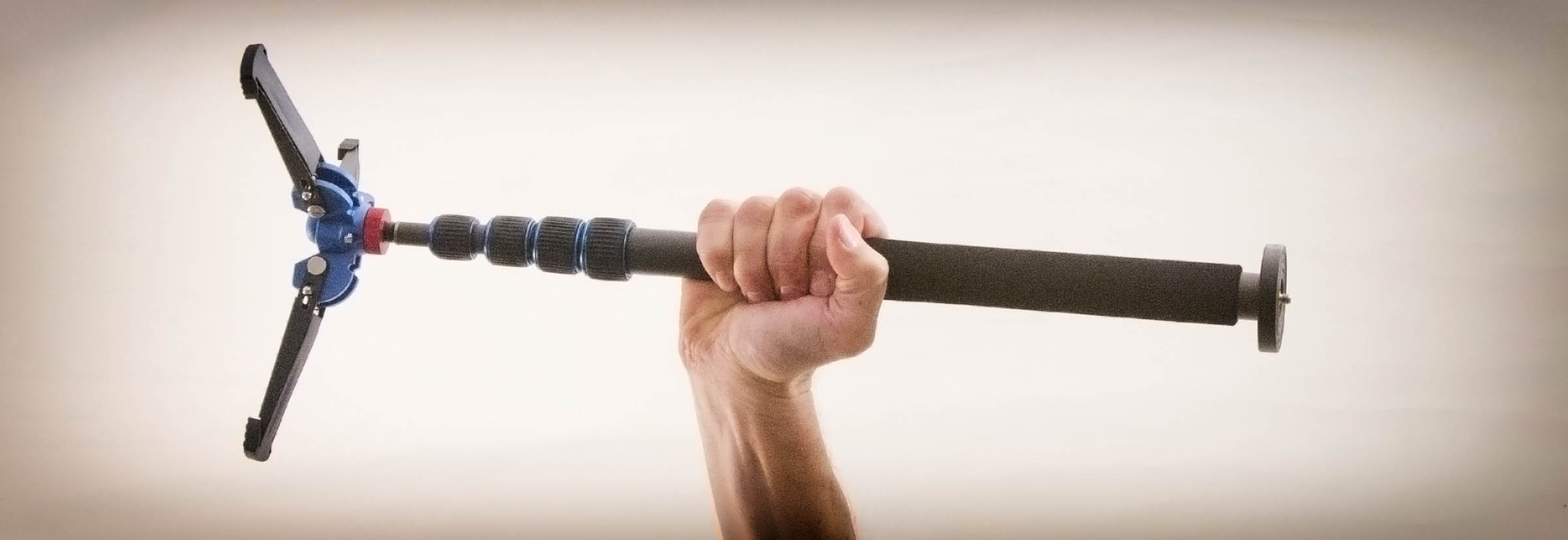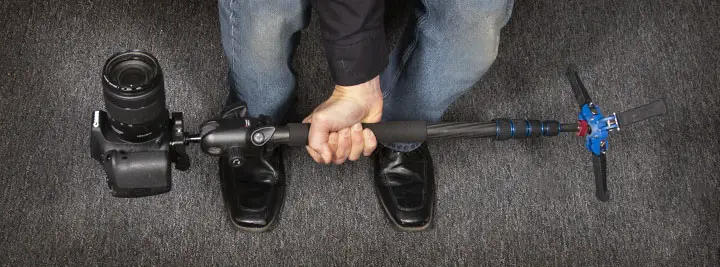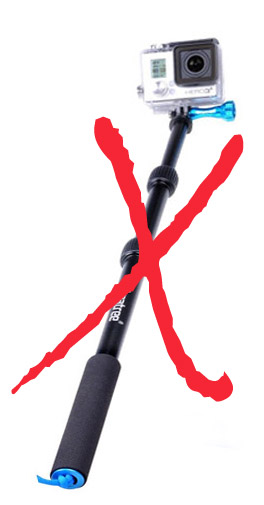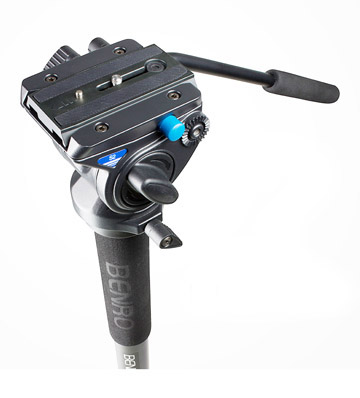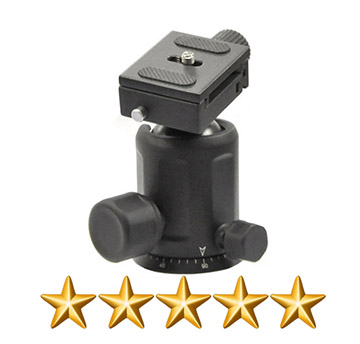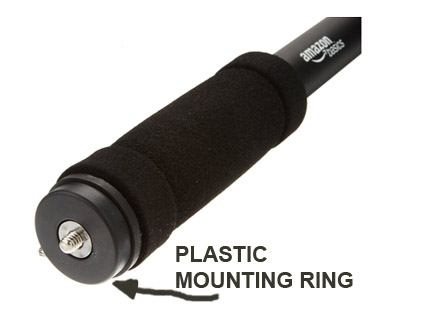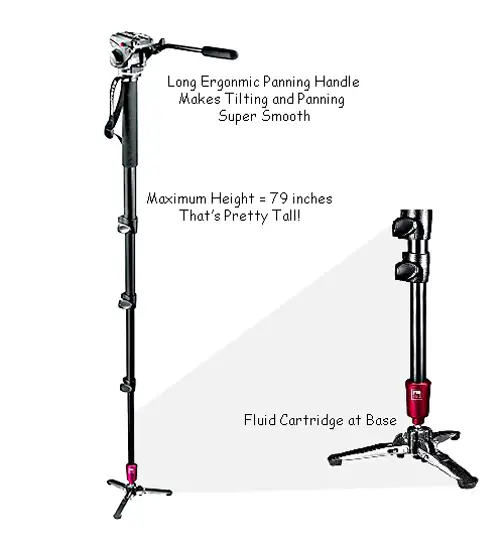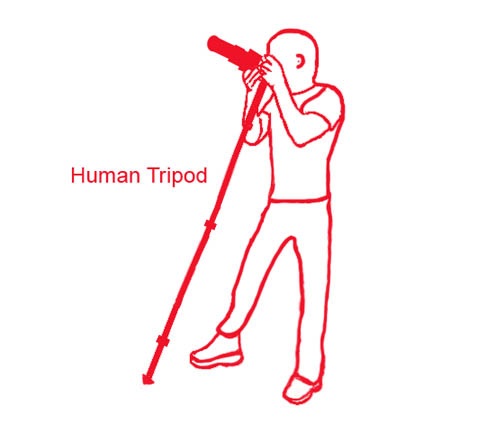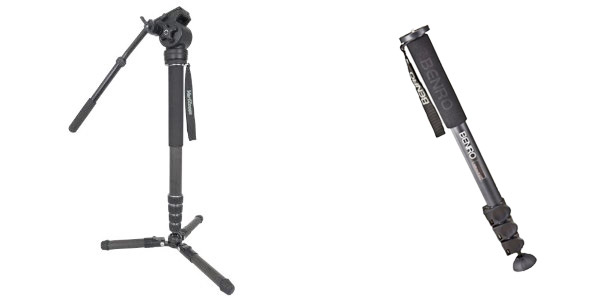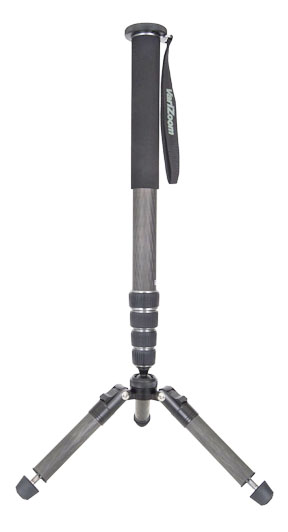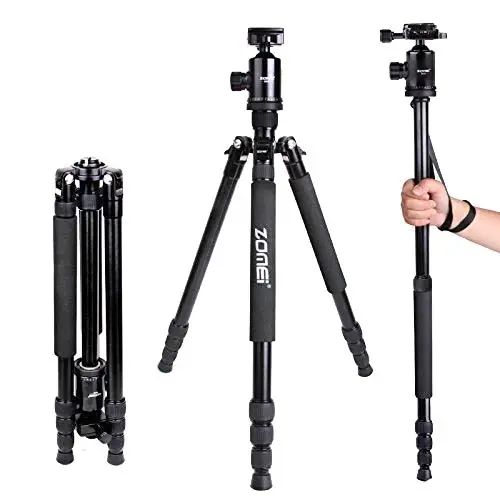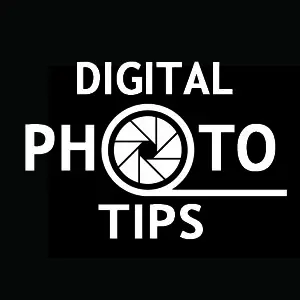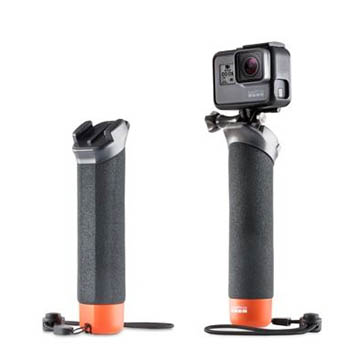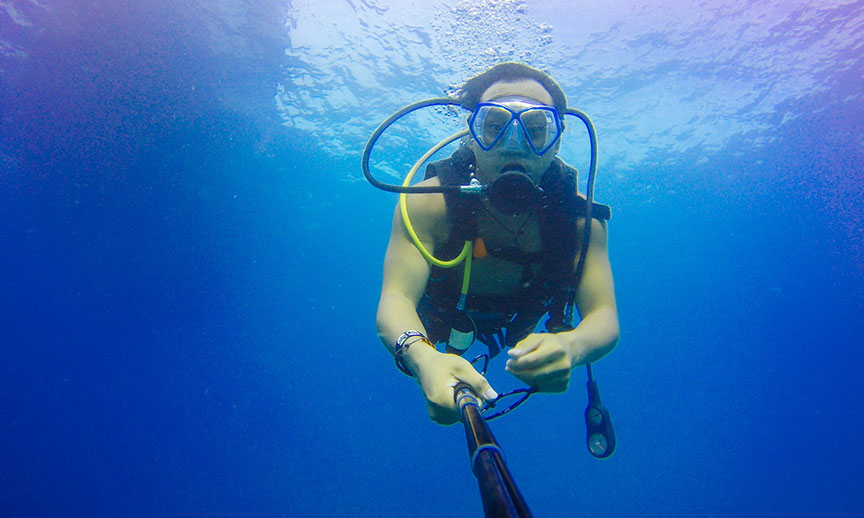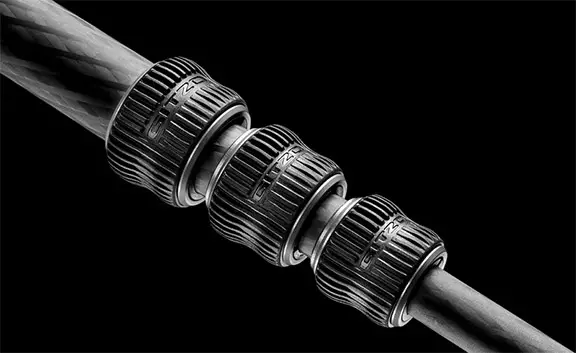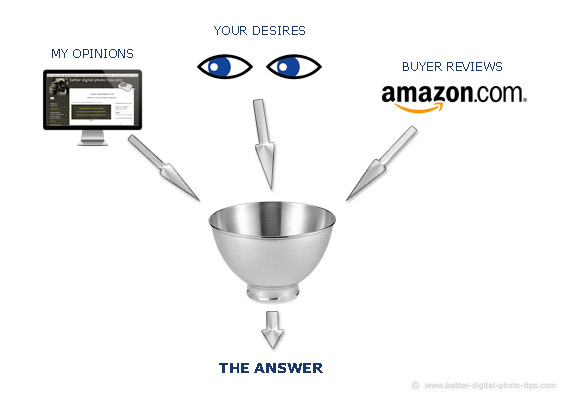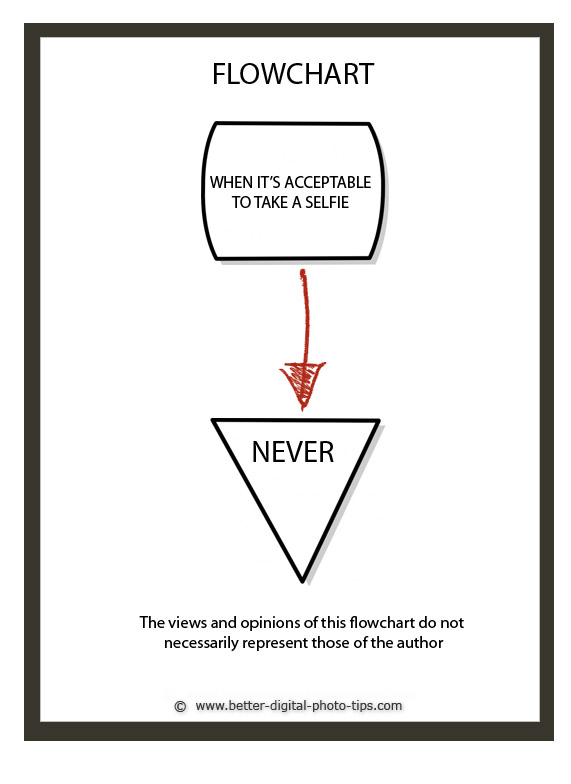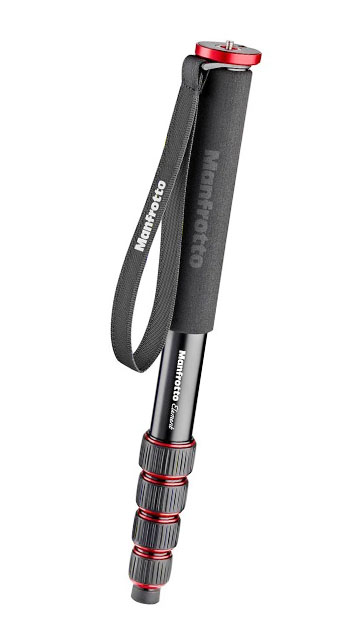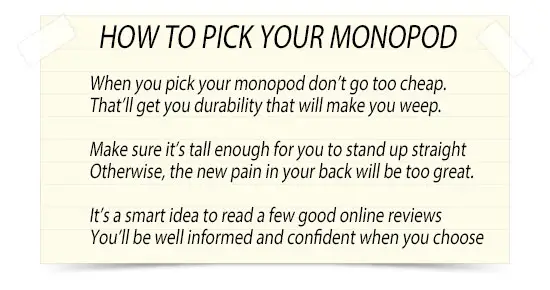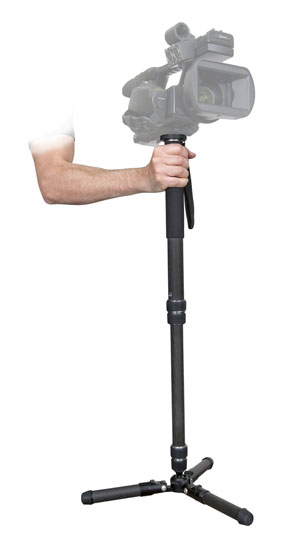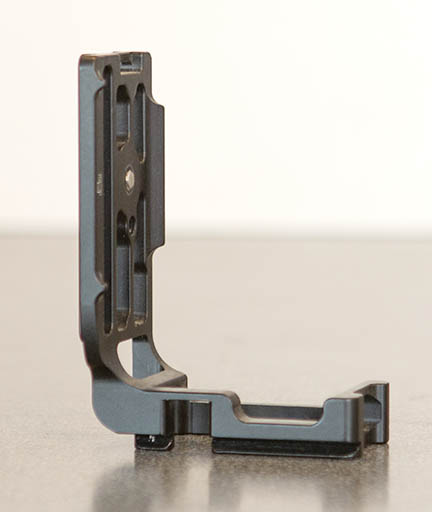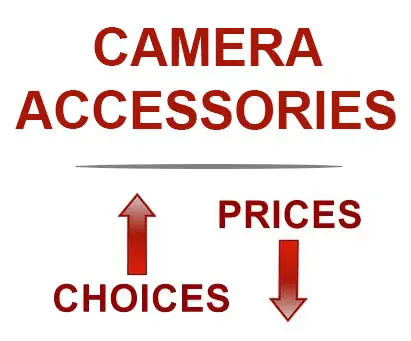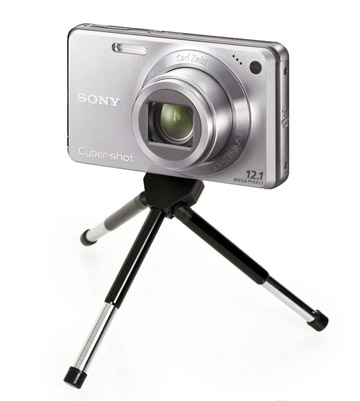HOW TO POSTS: LIGHTING AND COMPOSITION
monopod advice for beginners
WRITTEN BY: BRUCE LOVELACE
UPDATED: DECEMBER 28, 2023
You need some monopod advice, but you're wondering where to get it.
There's plenty of general advice on how to use a camera monopod, as well specific advice on using monopods for video, with heavy lenses, and the best monopod you should use for wildlife and bird photography. These specific tips can come from a variety of sources.
It's important to read the articles on monopods that pertain to how you're going to use yours. Photographers preferences with monopods will vary as much as their preferences for camera brands and accessories. I've purposely posted over 50 articles relating to camera monopods and you can find the index here.
If you're looking for advice on buying a monopod, it's a good idea to check out several monopod reviews on any given monopod you are investigating. Pay attention to the issues that are brought up. If the issues don't apply to your own specific situation, you can ignore them.
1. pay attention to the monopod head
The head you attach to the top of your monopod affects it's performance more than anything else and it's a topic many forget to explore as part of the process of evaluating a particular monopod.
Some photographers downplay the use of an adjustable head. I don't. That might be a valid opposition if we were only shooting in a two dimensional world.
Most commonly used on monopods are ball heads or fluid heads.
We live in a three dimensional world of changing angles, twists, leans, tilts, and rotations.
Of course, you can rotate the monopod shaft itself.
This movement is great for moving targets like wildlife, race cars, or other similar sporting events where the action is only side to side with no vertical component.
If that is the only type of photography you are doing with your monopod, you can get away with not using an adjustable head.
The only time I shoot with a monopod that doesn't have an adjustable head attached is when I am shooting everything at eye-level, which is not too often.
2. Make sure your monopod is tall enough
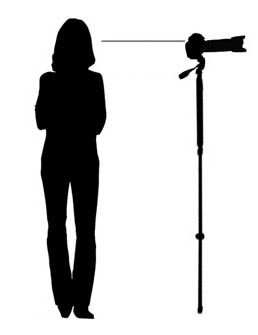
Don't try to skimp by going with the bare minimum in terms of how high your monopod should go. This is good beginner advice for your monopod for two reasons.
If you extend all of your monopod sections to their maximum length to get it to eye-level, you may introduce a bit of instability or vibration. This is especially true with the lighter models of camera monopods. The leg sections on the lightweight models are thinner and not as rigid.
Secondly, you will occasionally run into situations where you want your camera at a higher the eye-level height. Here are three examples. When you're shooting on an incline, when your photographing subjects up high in elevation, and if you're shooting overtop of an obstacle, you'll need the extra height capability of your monopod.
The biggest complaint about monopod problems is the plastic collar that surround and holds the mounting screw.
With cheaper monopods you run the risk of having this breaking, your camera falling off , or even with the mounting screw getting stuck in your camera with no practical way to remove it.
This type of monopod top is okay for a light, simple point and shoot camera but extra care should be taken to only screw it on somewhat snugly and treat it gently.
3. best monopod buying advice
Read several monopod reviews first. Rather than read the marketing materials directly from a monopod manufacturer like Manfrotto or Benro, learn what other photographers users have discovered through their purchases.
The way our minds work, we sometimes have preconceived notions and then go out and seek information that supports it. Getting opinions and reviews from shooters with other perspectives is a great way to gather relevant information and make better monopod buying decisions.
Even when I am not in the market to buy something right away, I'll visit Amazon and read the customer reviews on any product:
As an Amazon affiliate I may receive a small commission from qualifying purchases, at NO added cost to you.
4. best monopods for video
The best monopods for video have either a fluid head or a ball head, and small retractable feet. The video below shows the advantages of having a ball head as part of the basic video monopod.
Fluid heads give you a great way to SMOOTHLY add tilting, panning, and controlled zooming motion into your videos.
The retractable feet add stability and hold-ability to your video camera.
how to learn more about monopods
I don't know if you can anoint me as an Amazon expert, but I can tell you that my family and I have been purchasing quite a large variety of things from Amazon over the years, including camera equipment and accessories.
From Amazon we have purchased razor blades, humidifier filters, triathlon shorts, running shoes, fireproof safe, external hard drive for backing up my photographs, a lot of books, nutritional supplements, and..... well, you get the idea by now.
As an Amazon affiliate I may receive a small commission from qualifying purchases, at NO added cost to you.
video monopod advice
Because of advances in image stabilization technologies and better high ISO performance, the demand for monopods has gone down dramatically and I think that it's unfortunate. This is particularly more true with still photography than video. Monopods are extremely valuable for shooting better videos with a few simple techniques.
My best monopod advice is to read the related articles on monopods to get a good feel of everything there is to consider.
You can use the search box here or go to the list of Monopod Articles for all of the related articles.
There are also specific posts listed at link is at the end of this article below my signature.
As an Amazon affiliate I may receive a small commission from qualifying purchases, at NO added cost to you.
Search for a new topic on this site:
Does a monopod really help?
Yes, camera monopods are useful in several shooting situations. Here are 5 situations where monopods are very helpful.
1. LOW LIGHT. Shooting at dawn or dusk, at an indoor event like a wedding or a concert where you can't use flash. In darker situations you need to use a slower shutter speed to get the right exposure. Monopods also help avoid the decrease in image quality that shooting with a high ISO setting on your camera.
A monopod will steady your camera when you're using slower shutter speeds, but maintain your mobility as you move around for different vantage points and get sharp photos.
2.STABILIZATION. Although image stabilization is a valuable new technology that helps with sharpness, it's still a challenge to hold a camera and a heavy long lens steady, particularly when your zoomed in with a strong telephoto lens setting. In particular, having your camera mounted on top of a monopod will eliminate s lot of the up and down camera shake.
3. HIKING. When you're on the trail, you can use your monopod as an aid on rough or hilly terrain. That turns one of the monopod disadvantages (carrying it) to an advantage (using it as a walking stick) as you travel.
4. TRIPODS PROHIBITED. You'll also run into shooting situations where you're not allowed to use a tripod. Some venues prohibit the use of a camera tripod for safety reasons or because a tripod would interfere with foot traffic or other visitors enjoyment.
5. ARM FATIGUE. Holding a camera and lens in a ready position for extended periods of time can be tiring. This is particularly true for photographing wildlife and sports where you have to be constantly ready to shoot the action. Your monopod with support the weight of your gear so that you can concentrate on photographing your subject.
I hope you found this post helpful. See the related articles on monopods below my signature. Keep on Shooting. Keep learning.


ABOUT BRUCE LOVELACE
Bruce is the publisher of this website. He is the author of the book "Improve Your Photography Instantly." Read more on Bruce on his Bio Page. He's been known as The Traveling Photographer ever since 1994. Read more about this website.
View some of Bruce's photos on Instagram. Visit the Facebook Page. Watch him on YouTube. Bruce runs photo workshops for kids and adults, and provides one-on-one photography coaching.
Digital Photography Education Location on Google My Business
